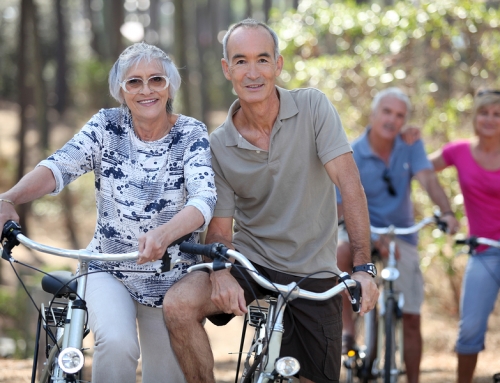Isolation is the “silent killer” affecting an estimated 8 million seniors in the U.S., but it is an epidemic that often goes unnoticed and untreated, according to a panel of experts who testified before the Senate Special Committee on Aging in April of this year. On average, 40 percent of seniors are impacted by the isolation that comes with living alone and the resulting feelings of loneliness, increasing their risk for depression, dementia, and premature death.
In her Congressional testimony, Julianne Holt-Lunstad, Ph.D., a psychology professor at Brigham Young University, noted that a lack of social interaction is as bad or worse for seniors’ health than smoking and obesity. Dr. Holt-Lunstad shared the results of her research, which looked at data collected from 148 studies of 300,000 participants and showed that increased socialization led to a 50 percent decrease in premature mortality among seniors.
>> Related: Senior Living: Is it Really “Cheaper” to Stay at Home?
An unexpected risk of staying in the home
A majority of seniors (nearly 90 percent, according to AARP) say they want to stay in their own home for a long as possible, and there can be many financial and emotional advantages to this choice. But this decision also can ultimately lead to social isolation, especially if a spouse, partner, or long-time friends and neighbors pass away or leave the home because they require inpatient healthcare services.
While living solo doesn’t always mean that a person will become lonely, it does increase the chances of becoming isolated. And according to the experts who testified before the Senate committee, seniors who have the highest levels of loneliness and isolation more than double their odds of dying within six years (compared to seniors with the lowest levels of loneliness).
>> Home Alone: Is It the Best Option for Aging Adults?
Innovative ideas to address senior isolation
Interpersonal contact is essential to all humans, but as study after study reveals, often as we age, we tend to have increasingly less interaction with others. Meanwhile, programs that help address this issue (for example, Meals on Wheels) are struggling with budget cuts. This is why healthcare providers and other organizations must look for innovative new ways to address and reduce isolation among seniors.
For example, CareMore, a unit of Anthem Insurance, recently launched the “Be in the Circle: Be Connected” campaign, developed by company president, Dr. Sachin Jain. During his years in private practice, Dr. Jain noted the irony that loneliness is both the cause and result of many health problems for older people. As friends and loved ones move or pass away, seniors begin to become increasingly isolated, which can result in a decline in things like hygiene, exercise, a healthy diet, and taking medicine properly, all of which can be detrimental to their health.
While doctors may not have traditionally asked their older patients about loneliness, the Be Connected program is changing that, helping healthcare providers identify people who have become socially isolated and coordinating with social workers to reach out to them for support. The program is also exploring ways to redesign healthcare facility waiting areas to become hubs for social interaction, and is building senior-focused gyms that encourage not only physical activity but also socialization.
>> Related: On the Clock: Maximize Time with Healthcare Providers
Solutions for senior loneliness
For seniors who are staying in their own home, as well as for those who decide to relocate to some type of senior living community, a primary focus, of course, is to keep people healthy and independent for as long as possible. But research shows that social interaction should also be a top priority since it is tied to both physical and mental health.
As a society, we need to explore ways to better encourage seniors to participate in volunteer programs or other activities that promote socialization. We should also consider how we can facilitate seniors’ ability to get out of the house and interact with others, such as increasing public transportation options and ride-sharing programs for seniors.
The opportunity to socialize with peers is one of the advantages of senior living communities, such as continuing care retirement communities (CCRCs, also called life plan communities). Not only do these communities offer a large group of potential friends who are in a similar place in life, they also offer numerous scheduled events and activities to residents–everything from happy hours, to cooking and fitness classes, to affinity groups that share a common hobby or interest.
>> Related: 4 Ways CCRCs Help Seniors Stay Healthy
So while it is a source of comfort to many CCRC residents to know that they have access to progressive care services should they need it, the physical and psychological benefits that go along with frequent socialization opportunities may be even more valuable to their long-term health.
Learn more about CCRCs in your area by using our free online community search tool.






